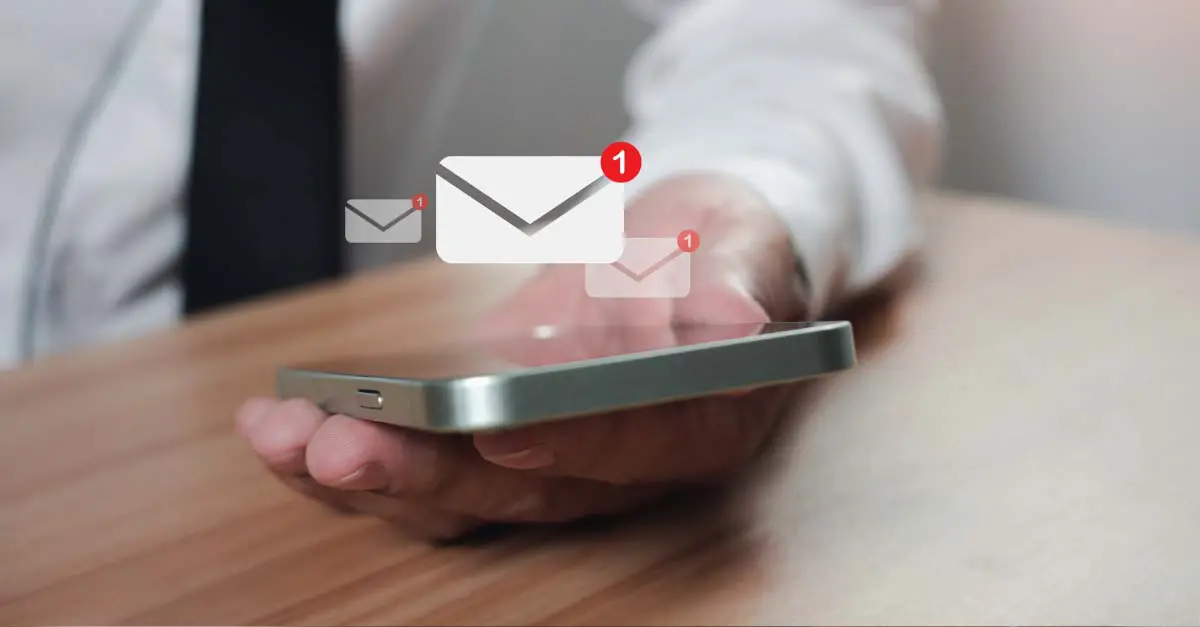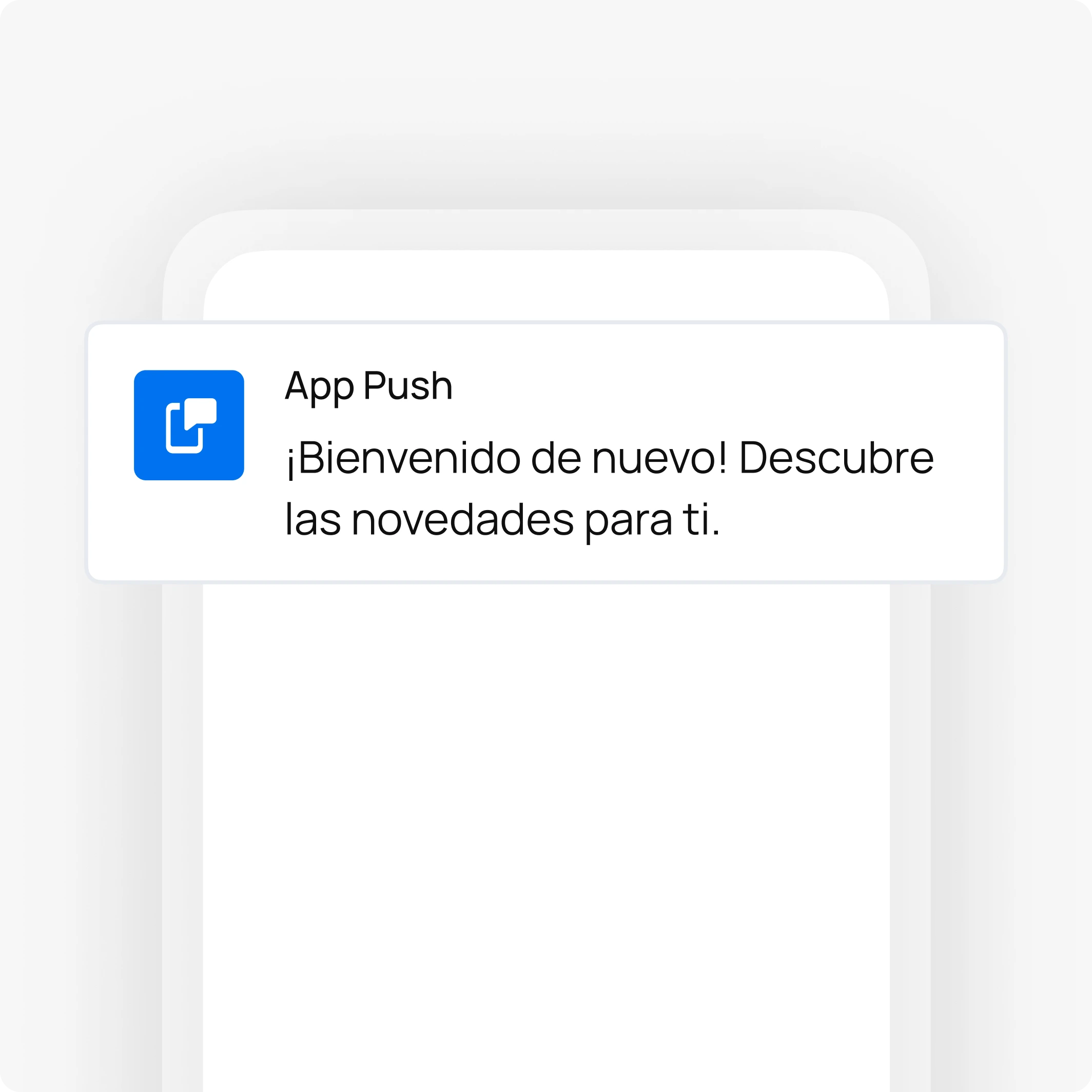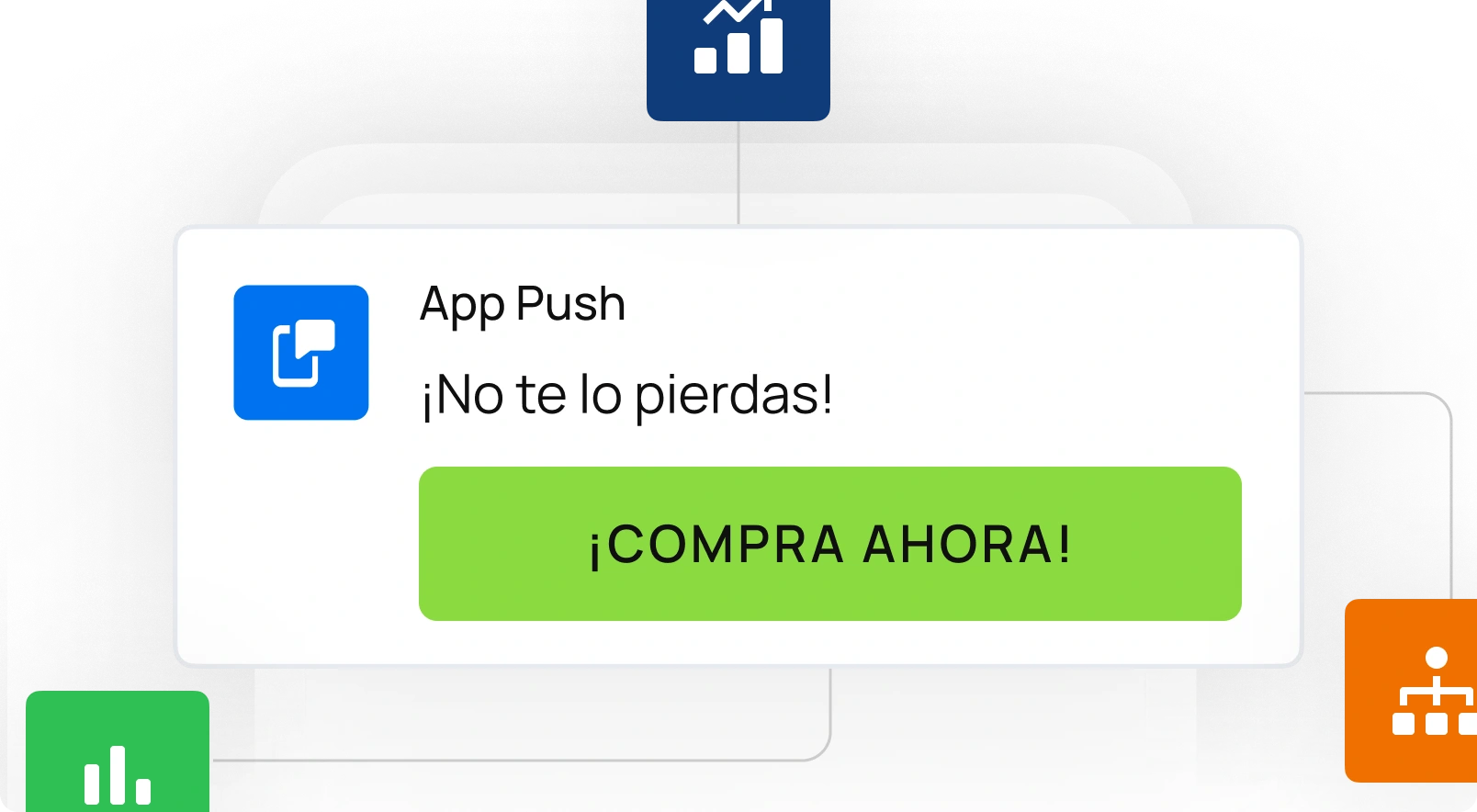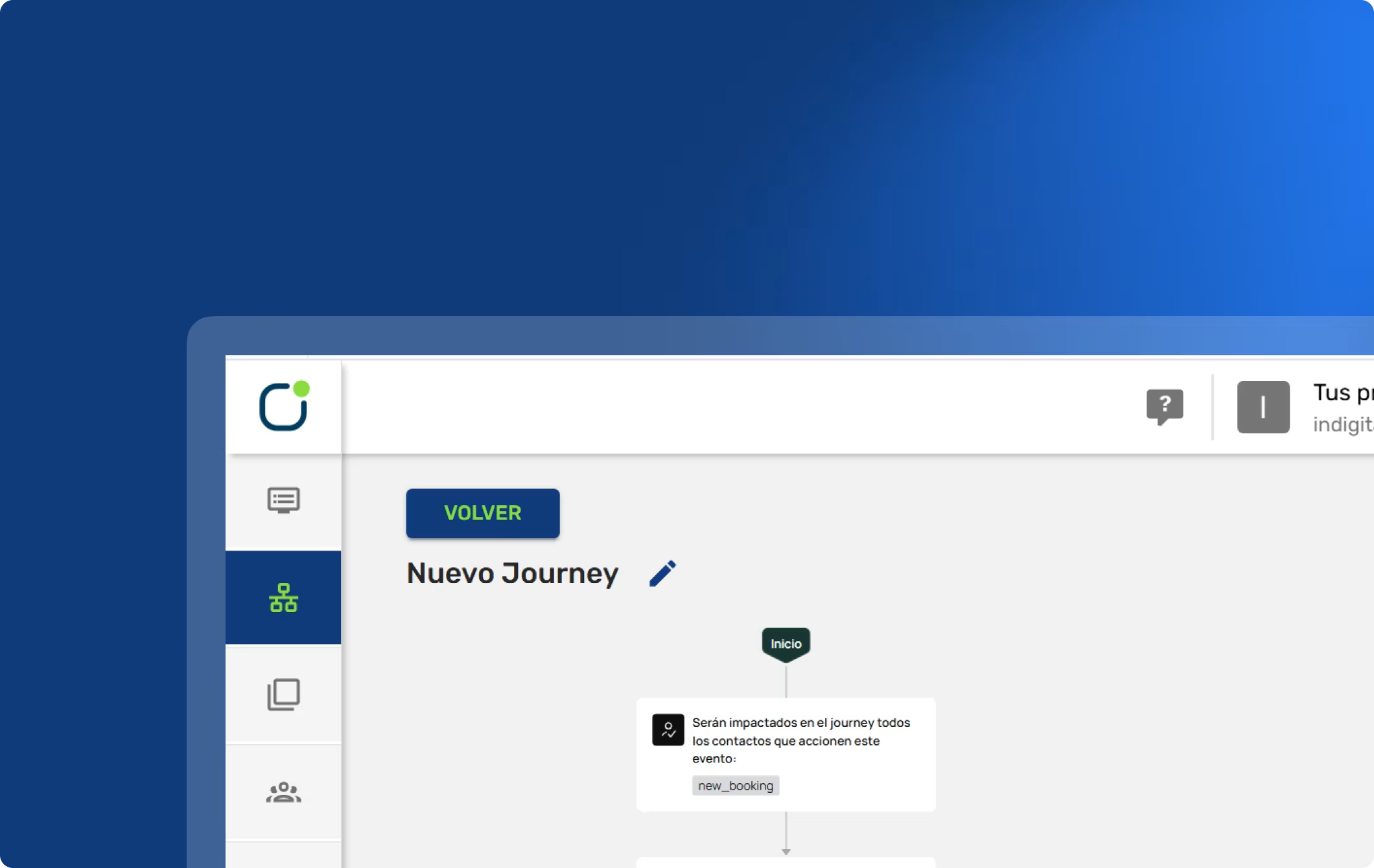Article
Software de Notificaciones Push: La Guía Definitiva


¿Qué es el software de notificaciones push?
En este blog, cubriremos todo lo que necesitas saber sobre el software de notificaciones push: desde los distintos tipos de notificaciones push, sus beneficios para llegar a los usuarios, qué buscar en este tipo de software, hasta las mejores prácticas para mejorar el compromiso del cliente y aumentar las ventas.
El software de notificaciones push permite a las empresas enviar alertas y mensajes en tiempo real directamente a los dispositivos de los usuarios, como smartphones, tabletas y ordenadores de escritorio. Estas notificaciones pueden incluir texto, imágenes y elementos interactivos, permitiendo a las organizaciones comunicar información importante, promocionar productos o servicios, y mantener el contacto con los usuarios, incluso cuando no están usando activamente la app o el sitio web.
Este tipo de software generalmente funciona con un sistema de suscripción voluntaria, lo que significa que los usuarios deben aceptar recibir las notificaciones. Una vez activadas, las notificaciones push pueden enviarse automáticamente en función del comportamiento del usuario o programarse para momentos específicos. Esta capacidad convierte al software de notificaciones push en un canal poderoso de marketing y comunicación, mejorando el compromiso y la retención del usuario al ofrecer contenido oportuno y relevante directamente en las pantallas.

Ejemplo de software de notificaciones push
Importancia en el marketing digital y el compromiso del usuario
Con la disminución de la atención y el aumento del volumen de anuncios que la gente ve cada día, captar la atención de los clientes se ha vuelto cada vez más difícil. Las notificaciones push se han convertido en una herramienta esencial en las estrategias de marketing digital y de compromiso, ya que se dirigen a los dispositivos que los usuarios más utilizan y tienen una tasa de apertura más alta que otros canales similares.
Utilizando las notificaciones push de manera efectiva, las empresas pueden mejorar sus esfuerzos de marketing digital, aumentar el compromiso del usuario y, en última instancia, impulsar el crecimiento y los ingresos.

Benefits of Using Push Notification Software
Las notificaciones push funcionan a través de un sistema de servidores y dispositivos para entregar mensajes directamente a los usuarios. Aquí tienes un resumen de cómo funcionan:
-
- Registro y suscripción: Cuando un usuario instala una app o visita un sitio web, generalmente se le pide que acepte recibir notificaciones push. Si acepta, el dispositivo se registra en el servicio de notificaciones push del sistema operativo (por ejemplo, Apple Push Notification Service para iOS o Firebase Cloud Messaging para Android).
-
- Generación de tokens: Tras el registro, el dispositivo recibe un identificador único (token) del servicio de notificaciones push del sistema operativo.
-
- Configuración del servidor: El desarrollador de la app o el propietario del sitio web configura un servidor de notificaciones push que puede comunicarse con el servicio de notificaciones push del sistema operativo.
-
- Envío de notificaciones: Cuando la app o el sitio web desea enviar una notificación, envía una solicitud a su servidor de notificaciones push con el contenido del mensaje y el token del destinatario.
-
- Enrutamiento a través de los servicios push: El servidor de notificaciones push reenvía el mensaje al servicio de notificaciones del sistema operativo correspondiente (por ejemplo, APNS o FCM).
-
- Entrega a los dispositivos: El servicio de notificaciones push del sistema operativo envía la notificación al dispositivo específico asociado con el token.
-
- Visualización en el dispositivo: El dispositivo recibe la notificación y la muestra al usuario, incluso si la app no está en funcionamiento.
Las notificaciones push utilizan un modelo de “empuje desde el servidor”, donde el servidor inicia la comunicación en lugar de que el cliente la solicite. Esto permite la entrega en tiempo real de información sin que la app necesite estar constantemente buscando actualizaciones.ugar de que el cliente la solicite. Esto permite la entrega en tiempo real de información sin que la app necesite estar constantemente buscando actualizaciones.
Tipos de Software de Notificaciones Push
Las notificaciones push y el software de notificaciones push se pueden clasificar en diferentes tipos según la plataforma y el método de entrega. Software como indigitall puede ayudarte a gestionar todos los diferentes tipos de notificaciones push. Estos son los principales tipos de notificaciones push:
Notificaciones Push Web
Son mensajes enviados directamente al navegador de escritorio o móvil del usuario, incluso cuando no están navegando activamente en el sitio web. Estas notificaciones:
-
- Aparecen en la pantalla principal de un dispositivo, ya sea un ordenador o un smartphone.
-
- Contienen texto e imágenes personalizables.
-
- Están vinculadas a páginas web específicas.
-
- Pueden recibirse sin que el usuario esté navegando activamente en el sitio.
-
- Requieren la suscripción del usuario para recibir notificaciones.
Las notificaciones push web son particularmente eficaces para aumentar el compromiso, entregar comunicaciones instantáneas y recuperar carritos abandonados.
Notificaciones Push Móviles y In App
Son mensajes enviados directamente al navegador de escritorio o móvil del usuario, incluso cuando no están navegando activamente en el sitio web. Estas notificaciones:
-
- Aparecen en la pantalla principal de un dispositivo, ya sea un ordenador o un smartphone.
-
- Contienen texto e imágenes personalizables.
-
- Están vinculadas a páginas web específicas.
-
- Pueden recibirse sin que el usuario esté navegando activamente en el sitio.
-
- Requieren la suscripción del usuario para recibir notificaciones.
Las notificaciones push web son particularmente eficaces para aumentar el compromiso, entregar comunicaciones instantáneas y recuperar carritos abandonados.
Notificaciones Push In-App
Son mensajes entregados a los usuarios mientras están usando activamente una aplicación. Estas notificaciones:
-
- Aparecen dentro de la interfaz de la app.
-
- Pueden estar altamente dirigidas en función del comportamiento y las preferencias del usuario.
-
- A menudo se utilizan para guiar a los usuarios, anunciar nuevas funciones o promociones dentro de la app.
Al aprovechar estos diferentes tipos de notificaciones push, las empresas pueden crear una estrategia de comunicación integral que llegue a los usuarios en diversas plataformas, aumentando el compromiso, las conversiones y la retención de clientes.
Beneficios del Uso del Software de Notificaciones Push
El software de notificaciones push ofrece múltiples ventajas para las empresas que buscan mejorar el compromiso del usuario y aumentar las conversiones. Aquí algunos beneficios clave:
-
- Mayor compromiso del usuario.
-
- Mejora en la retención.
-
- Mayores tasas de conversión.
-
- Comunicación en tiempo real.
-
- Capacidades de marketing dirigido.
-
- Canal de marketing rentable.
-
- Alta visibilidad y tasas de apertura.
-
- Valiosas métricas y análisis.
-
- Mejor experiencia del usuario.
En resumen, el software de notificaciones push es una herramienta poderosa que puede mejorar significativamente la estrategia de marketing de una empresa.








